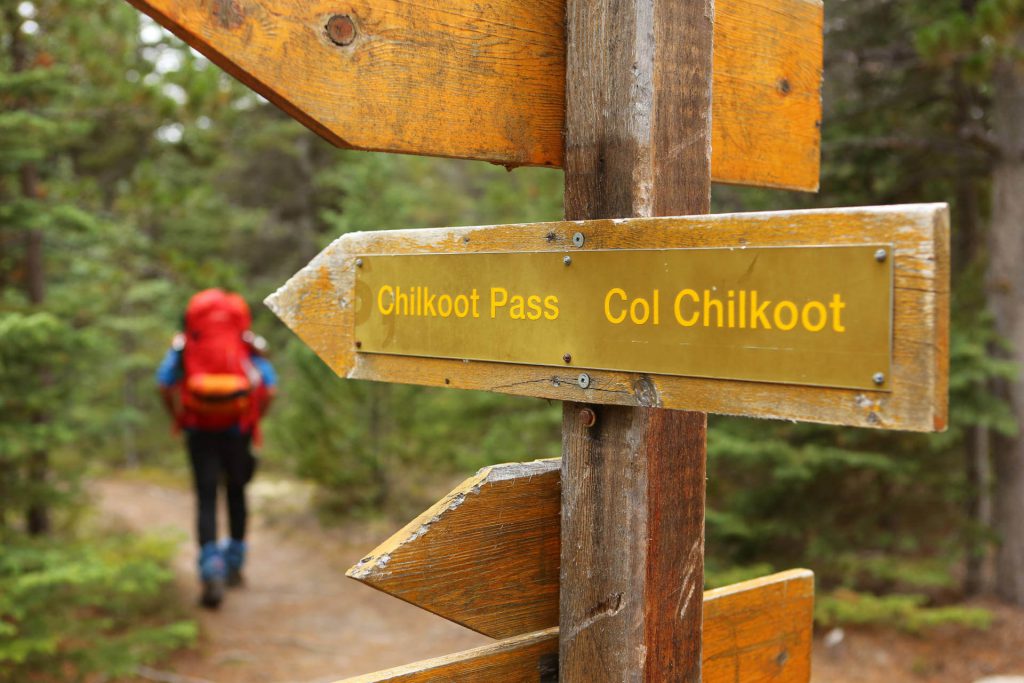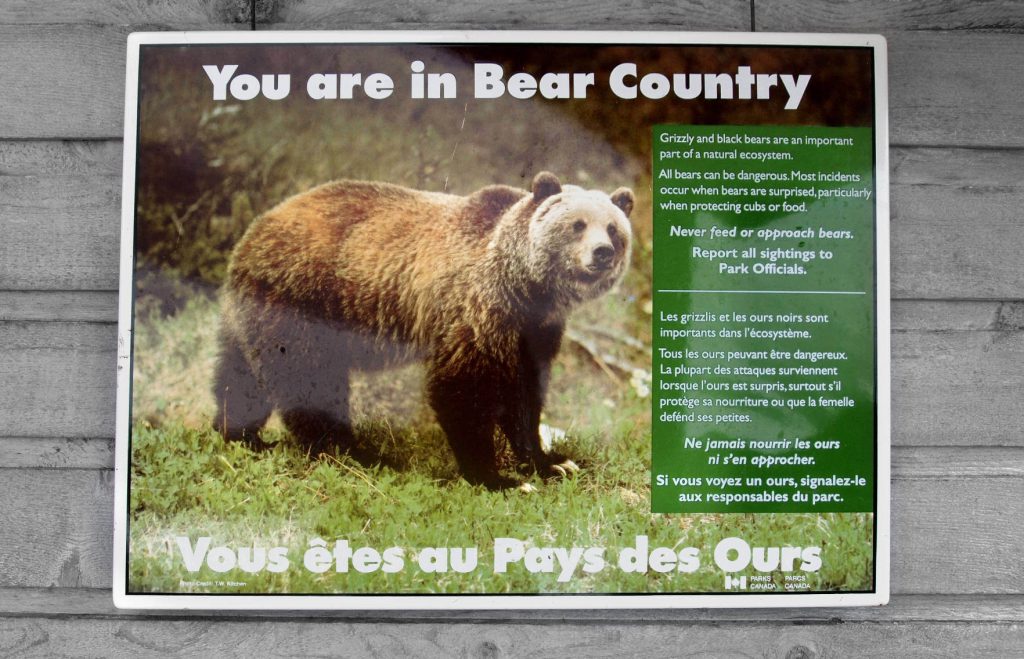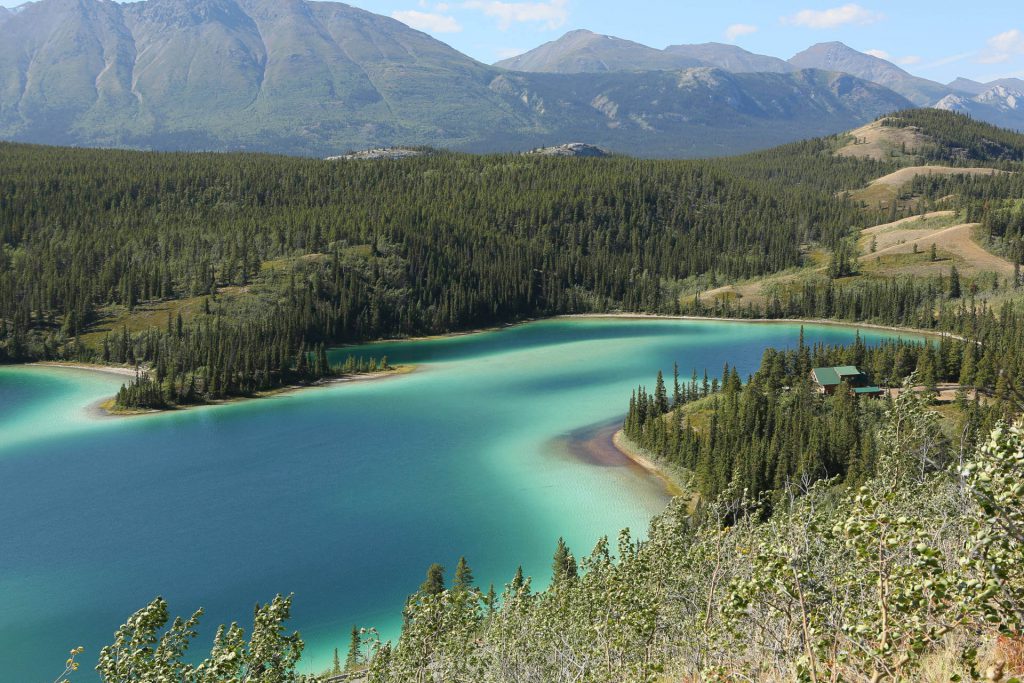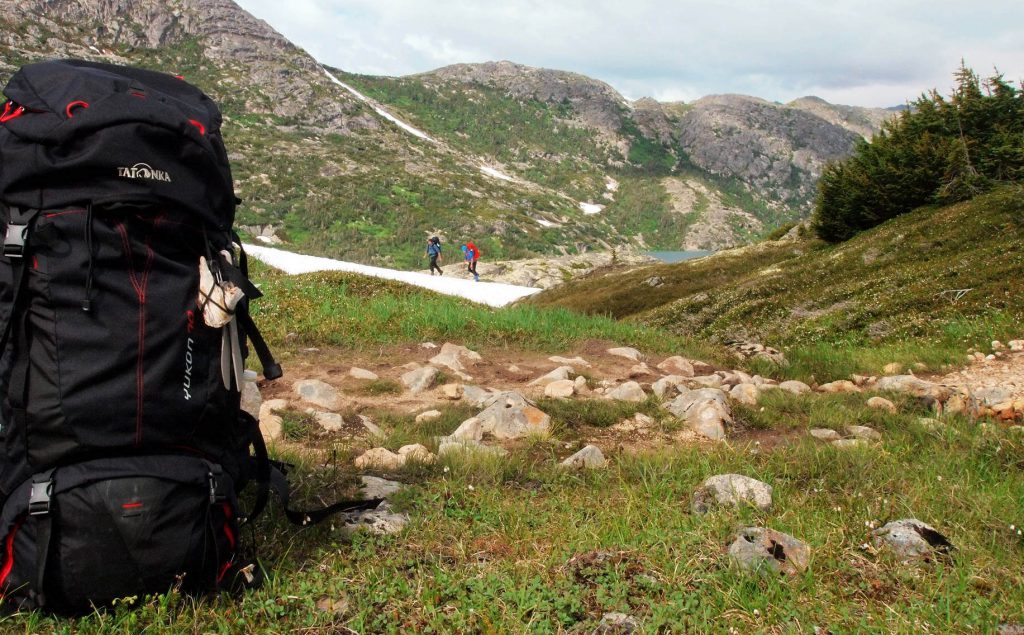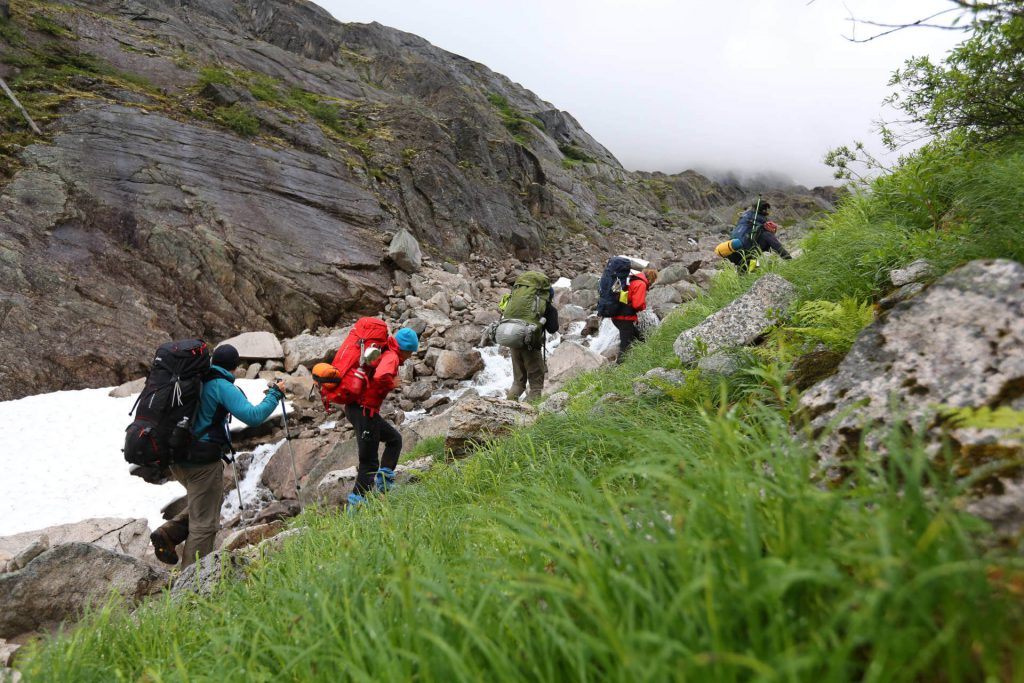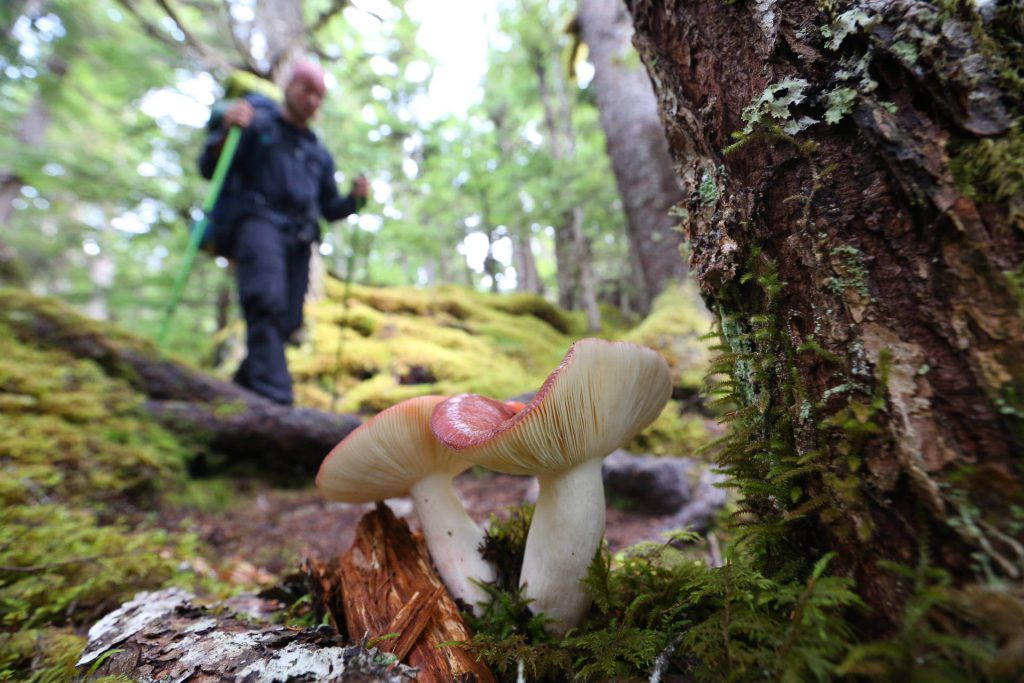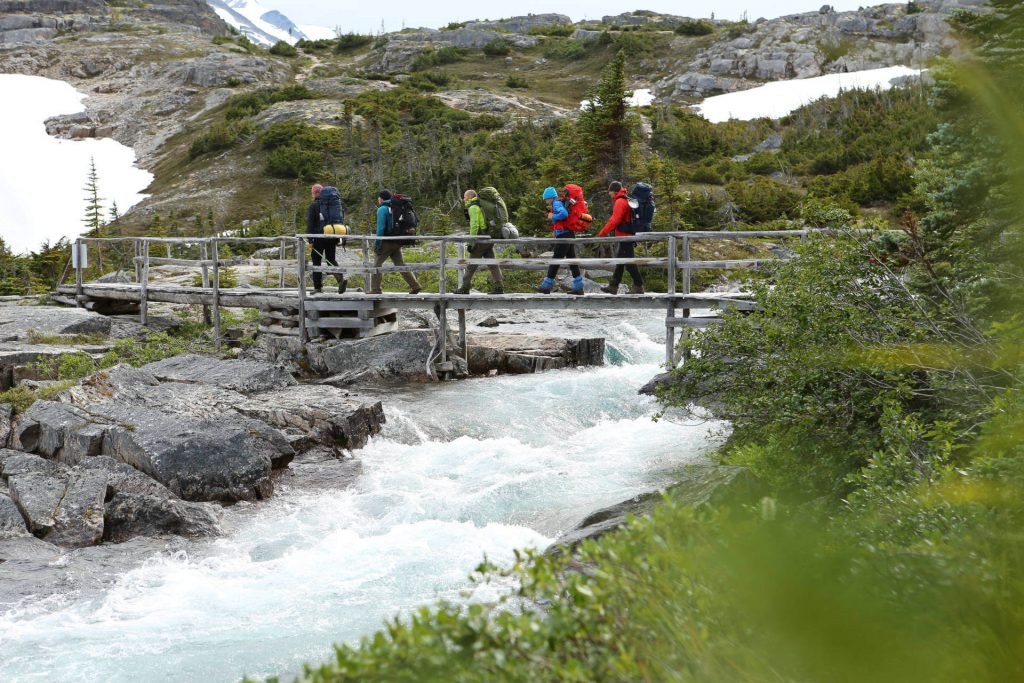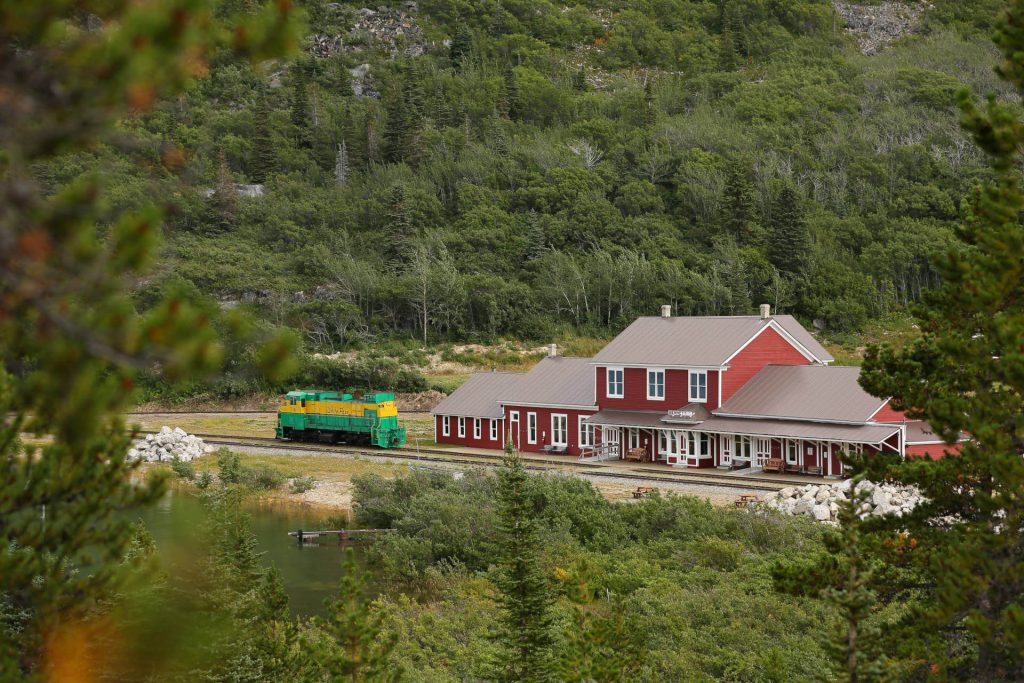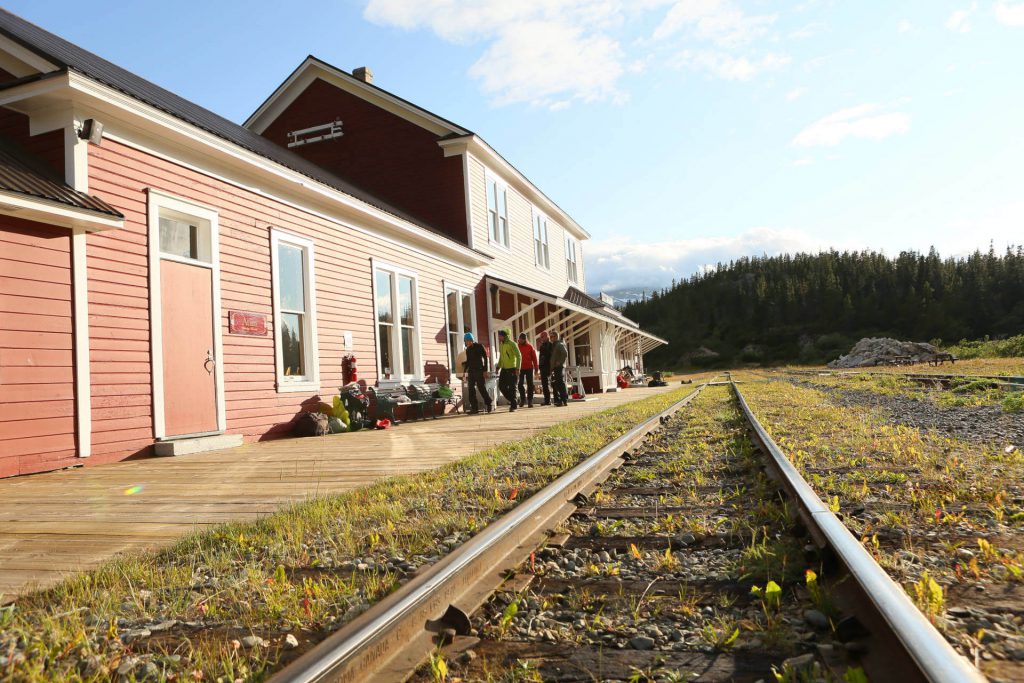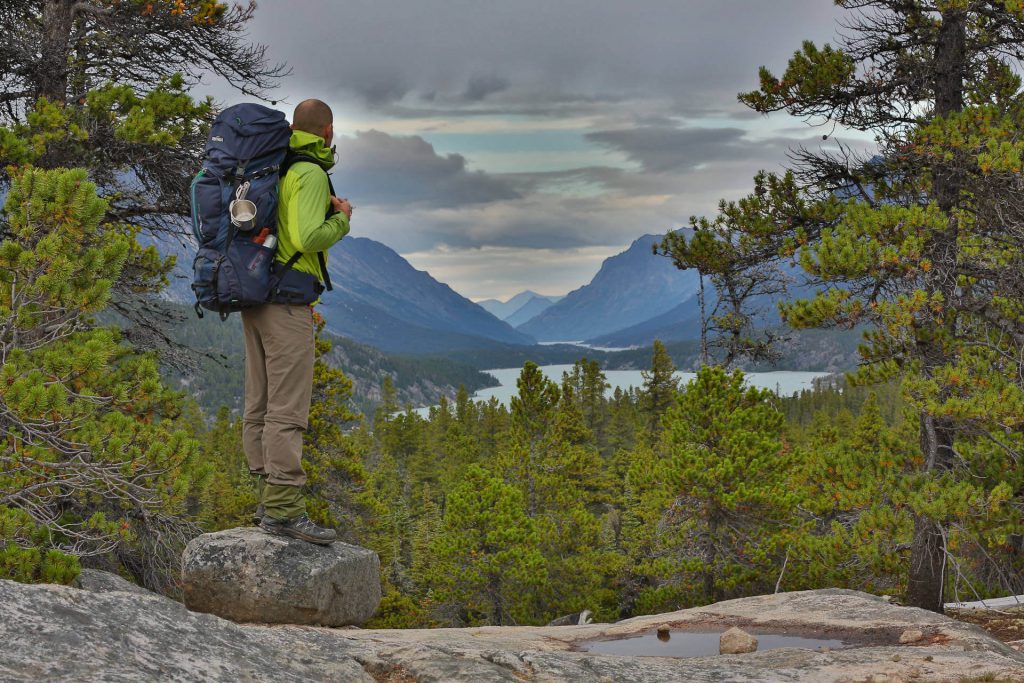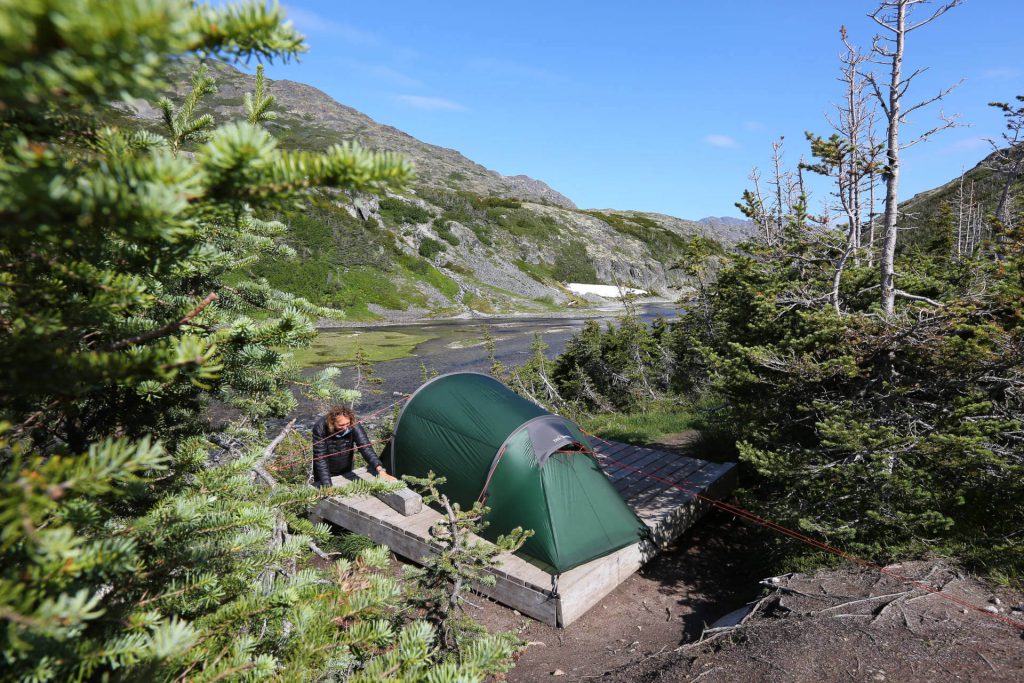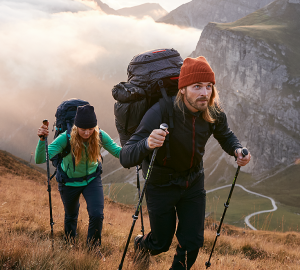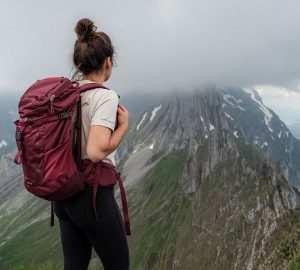– By Istvan Ladanyi, Product Designer Tatonka
Against the one bear you should defend yourself and just look him in the eye but the next bear you should definitely not face up to but throw yourself to the ground as quickly as you can. One kind of bear can climb, another can’t. One thing is certain for both of them, they can both run faster than I can! Both may have a black coat – the only difference is a prominent hump on the head of one of them. Super!
Here we are talking about the Grizzly and the Black Bear. I was always well aware of these words of wisdom whilst trekking on the Chilkoot Trail but it was my good fortune that the “learning by doing” that I normally appreciate, was not put to the test. Bear “deodorant” (XXL pepper spray), information leaflets close at hand and a jack-knife at the ready did not really give me a feeling of security throughout my tour but instead my encounters with these elegant animals fortunately always took place at a distance that you could call exciting but at least not dangerous! A certain respect and the knowledge (learnt by heart) about the behavior of bears are in fact probably the best weapons along the Chilkoot Trail.
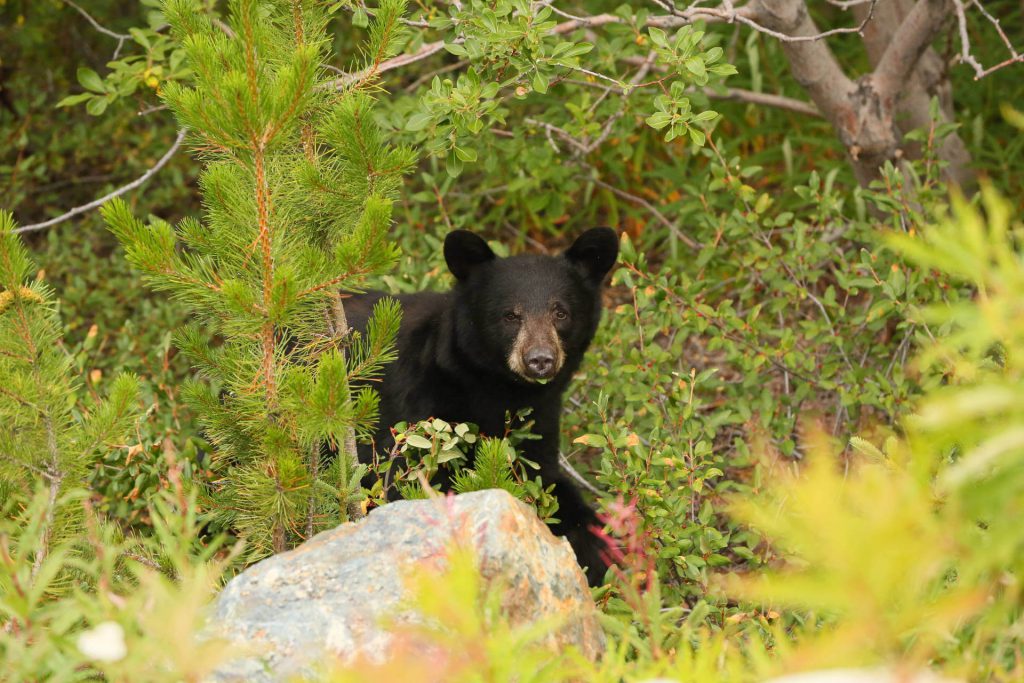
This trail was originally a trading route of the Tlingit First Nations which ran inland from the Pacific. When gold was found in the Klondike River near Dawson then after 1896 the so-called “Stampeders” stormed over the Chilkoot Pass in the search for gold. Now however, unlike those in gold fever searching for gold, we were not looking for the shortest way to gold but instead, just the possibility to test our products – and to take authentic photos for our next catalogue. Our team comprised six people and as our expert Tour Guide we were accompanied by the travel journalist Dirk Rohrbach, who had been several times on the trails of the Yukon Territory.
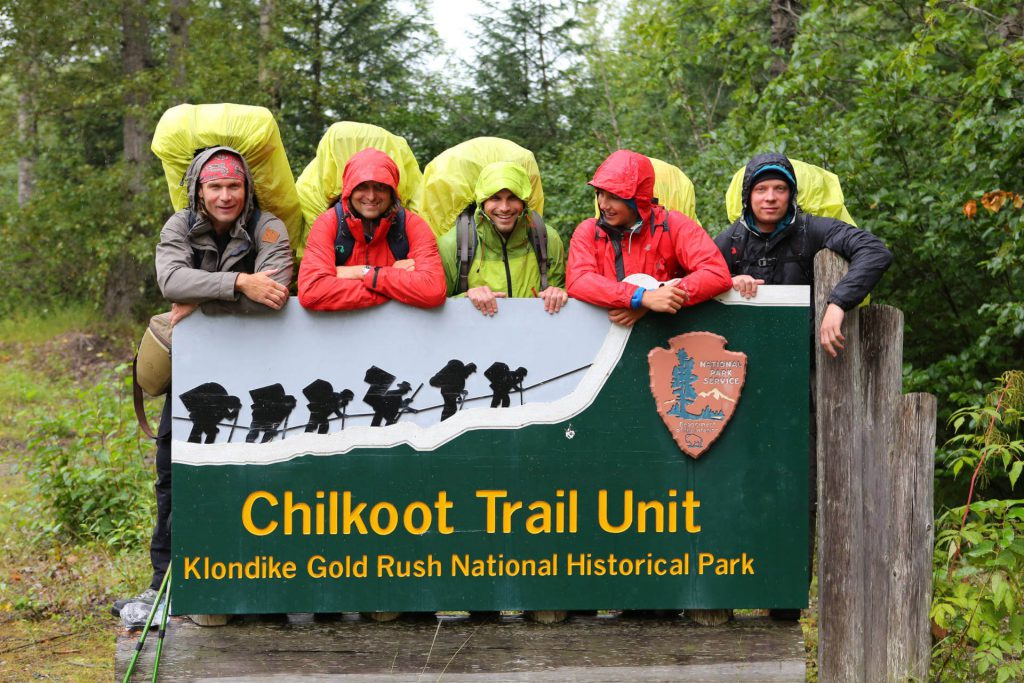
Skagway – Dyea (Trailhead)
The starting point of the trails is Skagway, a very surreal small town surrounded by mountains and a mixture of Wild West and “The Love Boat”. Every summer Skagway is transformed into a boomtown by the arrival of up to 400 cruise ships – what a contrast to that which now lay before us! We had heard that we would be more or less alone on the trail.
After the last burger and a short visit to the Trail Rangers in the National Park Service Trail Center, where you must register and pay for permits, we then went with an elderly lady in a minibus to Dyea, to the start of the trail. For the first time I hoisted the Yukon 70 with around 22 kg on to my shoulders, knowing that I was going to have it on my back for the next five days. Even the first stage was soon to prove to be a great challenge because the unaccustomed load, continuous rainfall and a steep ascent demanded all our energy.
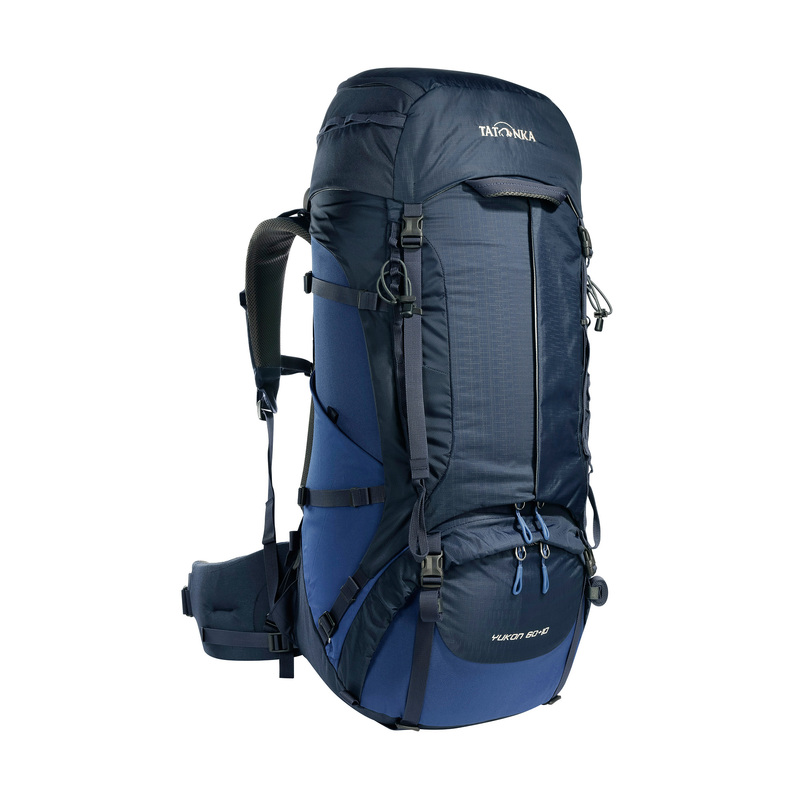
The trekking backpacks of the Yukon series are predestined for tours and journeys where the luggage has to be transported over longer distances.
The Yukon is optimized for loads of up to 25 kilograms and its V2 carrying system relieves the load on the spine.
Finnegan‘s Point
Nevertheless, we were rewarded with the spectacular view of the wild, roaring Taiya River and the known “boardwalks” over flooded landscapes through the forests. After about six hours we reached our first camp, Finnegan’s Point, directly on the riverside with a view of the glacier. Unfortunately the rain never ceased and so we had to test our tents under the hardest conditions. The erection of my one-man tent Kyrkja was easy as this was only a matter of the main material and two tent poles!
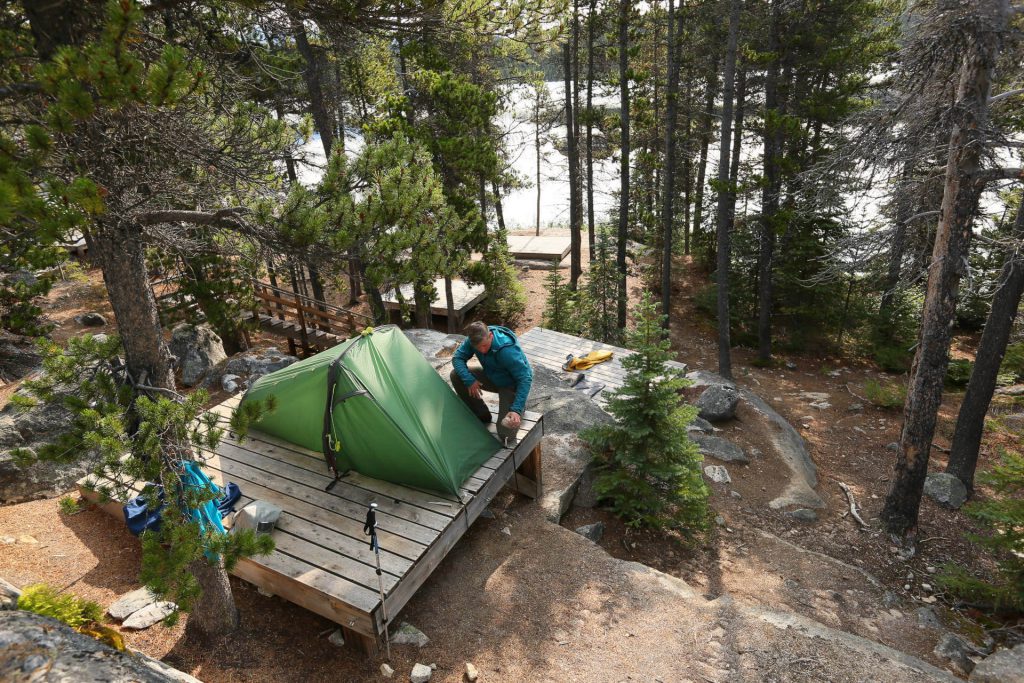
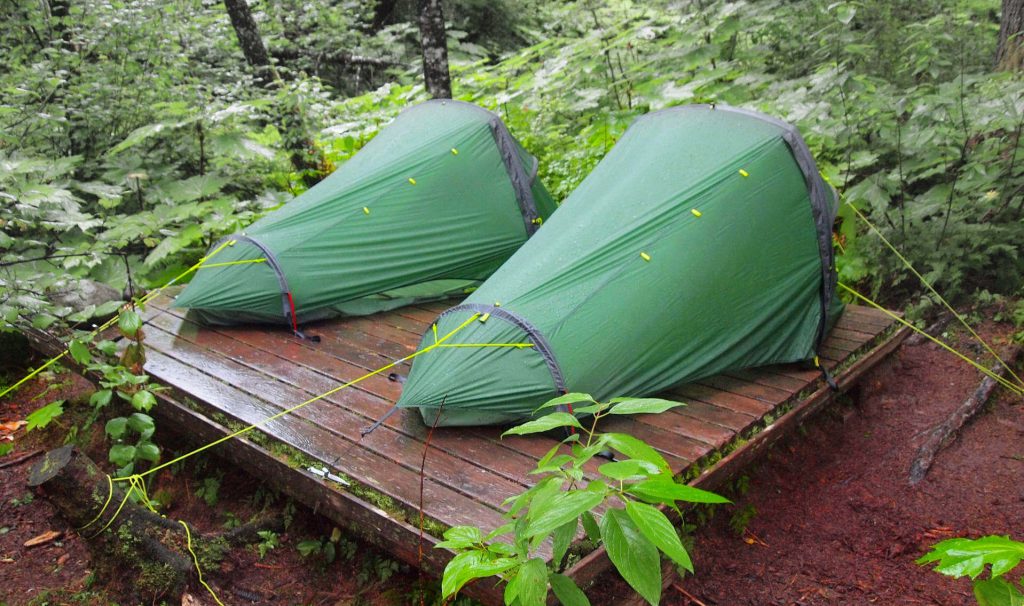
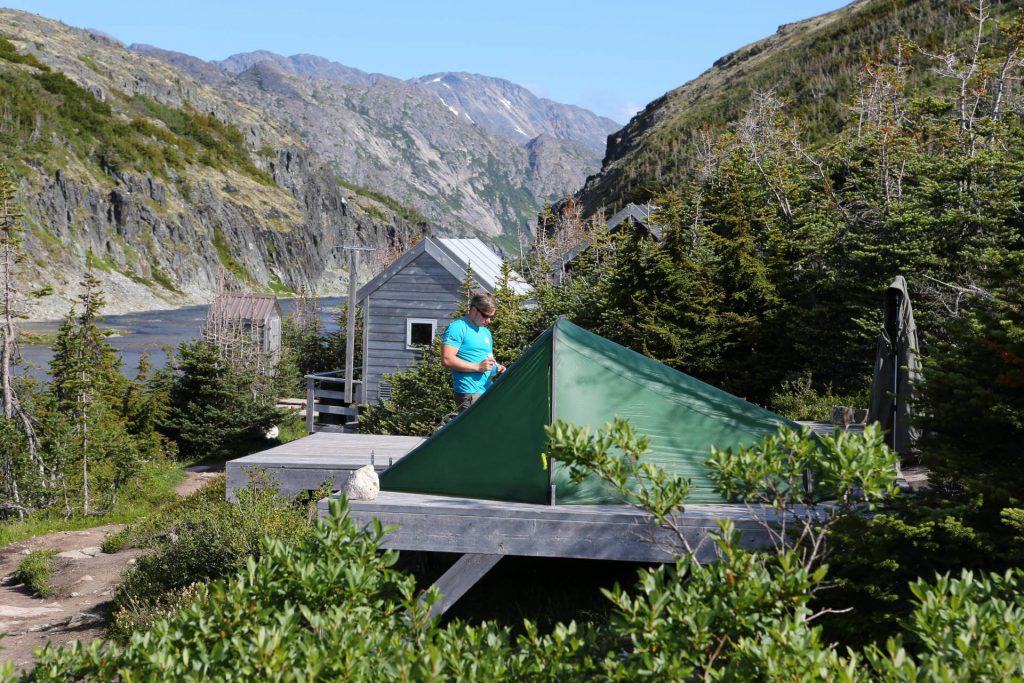
In the constant rain a major advantage soon proved its value – the suspended inner tent which remained dry. Even on this first stage of our tour we also saw fresh traces of bears such that in this night I wasn’t really able to sleep as I interpreted every little noise as a possible attack BUT nothing happened!
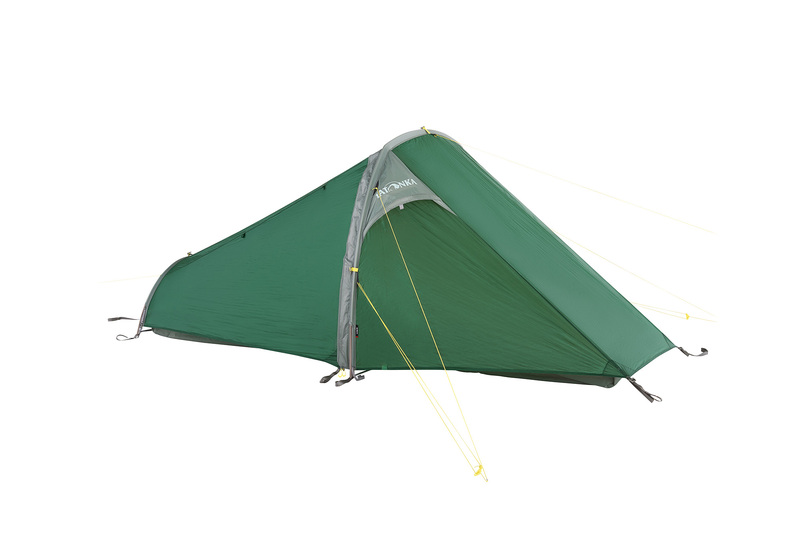
The tunnel tent Kyrkja is designed for one person and with its apse and side entrance it offers enough space for all your equipment including your trekking backpack.
The next morning we continued to Canyon City – a base camp on the other side of the river, reached via a suspension bridge. Here we could see the relics of former times, for example, an enormous steam generator which used to drive a cable railway to bring the material to the pass. Nature environments changed quickly from coastal rain forest to mossy pine forest and the ground itself changed, now bouncing underfoot. During the course of the day this proved to be extremely strenuous. After a few hours of trekking we decided to fill up our water reserves at a small stream and at the same time to make a film of this drinking scene.
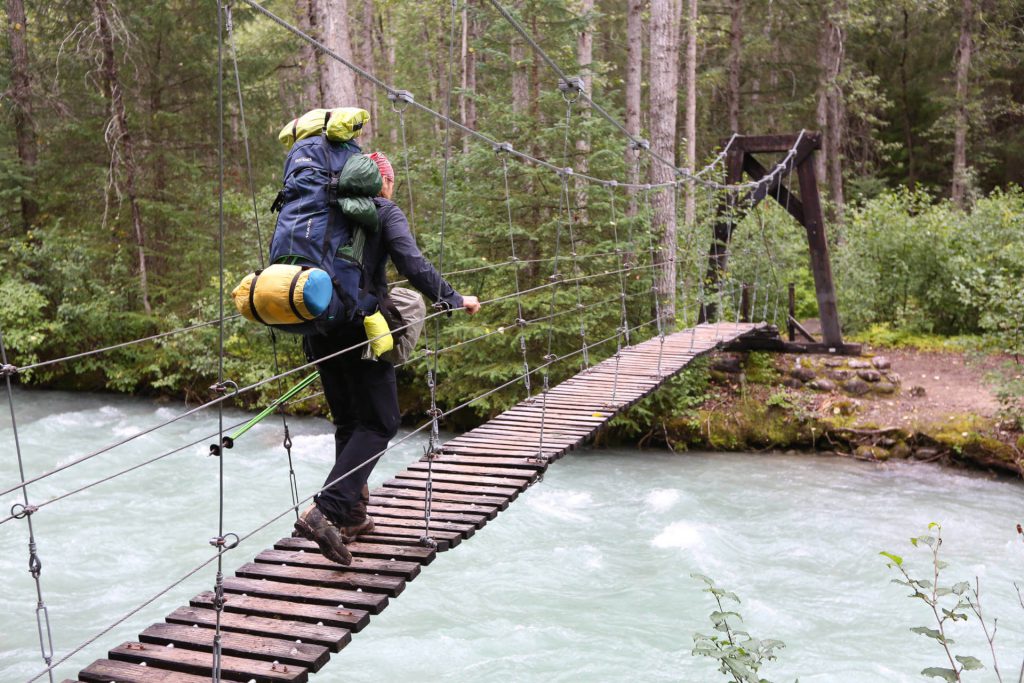
Ok, take off the rucksack and take the drinking bottle from the side pocket! And just at this time, we had our first encounter with wild bears: Just a stone’s throw away from out resting place was a Grizzly bear mother with her offspring, balancing on a tree trunk above the stream. Fortunately neither of them had any interest in us and they disappeared into the woods. I had no problem with that!

Also interesting: Peru: Trekking in Colca Canyon – A tour report: 5 days of trekking in the Andes Mountains
Sheep Camp
In the early evening we arrived at our second camp base. The Sheep Camp is situated directly at the base of the ascent to the Golden Stairs and is the last camp on the Alaskan side. The challenge for the next days was to be an ascent of approx. 800 m at over 310 m altitude difference and up to 12 hours of route march.
After our morning rituals (taking down the tent, disinfecting the water, swallowing a little muesli, packing rucksacks, emptying the bear boxes…) then off we went again. Bear boxes are extremely important and can be found in every camp in order to protect yourself from uninvited visitors to your tent or from the loss of foods. These are relatively massive steel containers closed with a lid and which are always set up outside the camp and which often show the signs or bear bites or paw scratches.
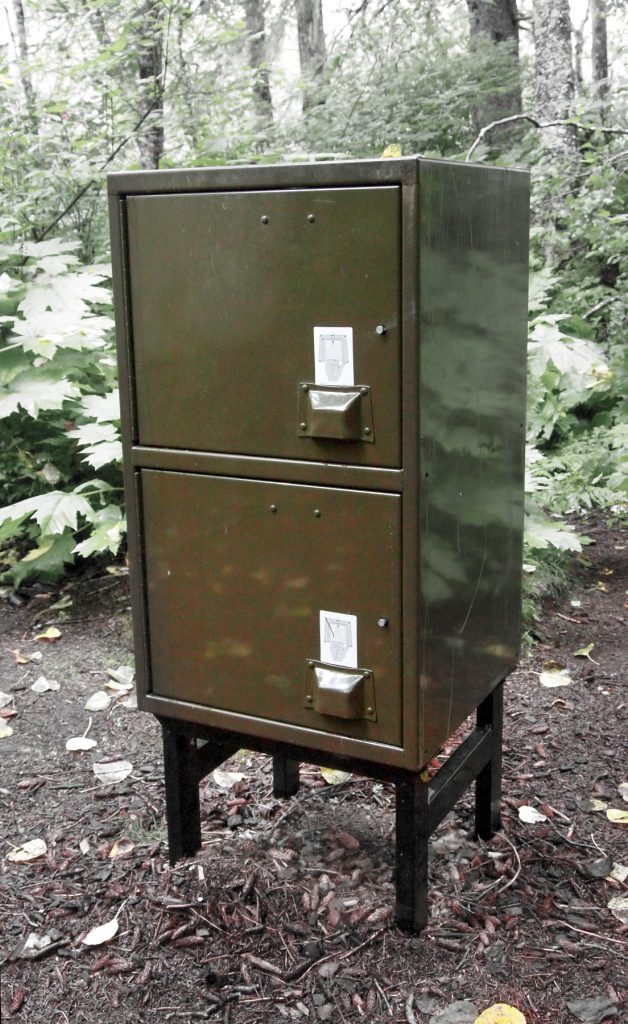
After trekking for four hours past huge rock formations and fields of snow along a path of artifacts from pioneer times the “golden steps” were now in front of us. I looked for “steps” but could not see any! This ascent was in fact composed of boulders and rocks that could really only be climbed on all fours. OK, we did it! Our reward was waiting for us: We were now standing directly on the border and in front of us was Canada, exactly as one always imagines it to be: The cold blue sky over grey, sometimes snow-capped mountain ranges, and with bright green meadows at the bottom. Some clouds played across the sunshine and created a magic effect over the dark blue Crater Lake and really made this a picture postcard view as in all the clichés. Thank you! My camera with more than 10 million Pixels and every possible filter cannot even begin to capture this view and why should it?
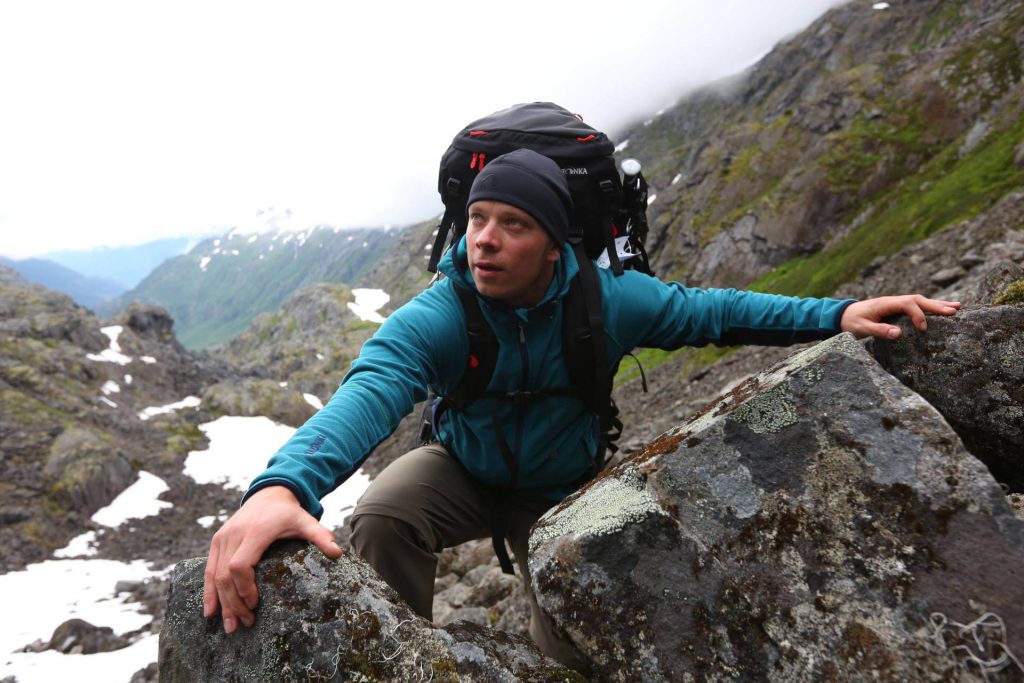
Happy Camp – Deep Lake
After a while we reached the nicest camp on the trail. The “Happy Camp” maybe the name is because you are so happy to finally get there! I threw my rucksack onto the tent platform and took off my Teva Boots – and I must say that up to now they had done a really good job. I didn’t have a single blister on my feet! This evening too, we were to enjoy a celebration meal from the provisions bag – dried chili con carne as the finest outdoor food. Next time I will take a fishing rod with me! The next morning I was woken up by the wild splashing river. When emptying the “bear boxes” I noticed that the containers on the Canadian side had an additional safety device with a splint in order to protect the provisions. I wondered if this meant that the Canadian bears were cleverer than the Alaskan bears – no matter!
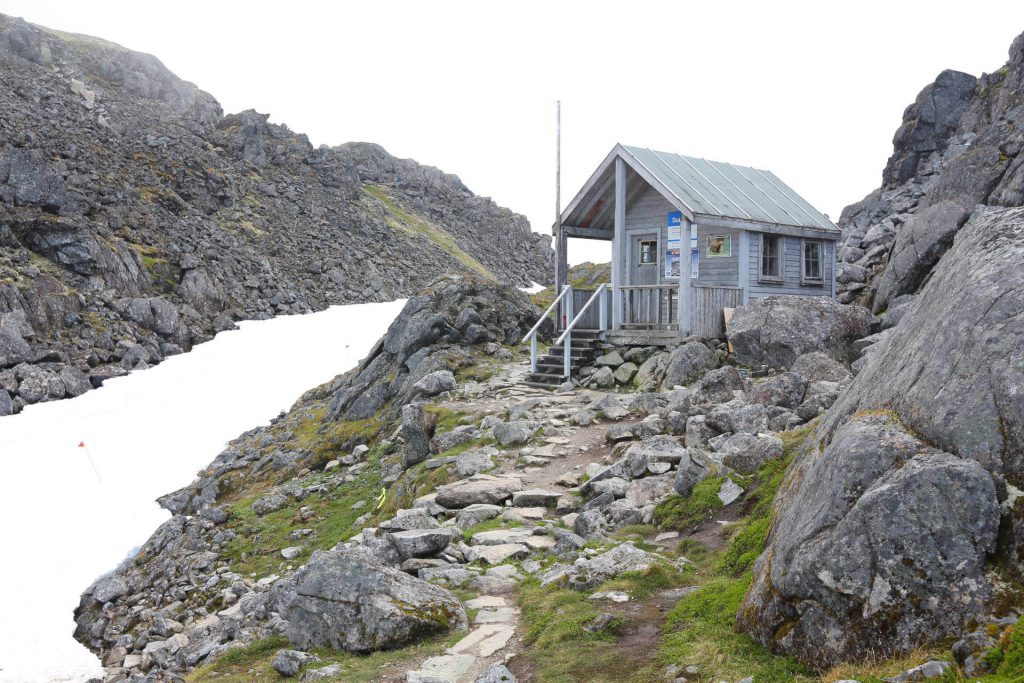
Now we were to descend again and we had fewer provisions and so our foot march on this day was quite relaxing. Nature maintained its postcard scenery and a partridge mother crossed our path with her six babies – delightful. We continued across vast expanses of snow, passing by rock formations and crossing small streams until we came to sandy ground with pine trees. It gradually became warmer and once again the vegetation changed dramatically we suddenly found ourselves in a completely different world.
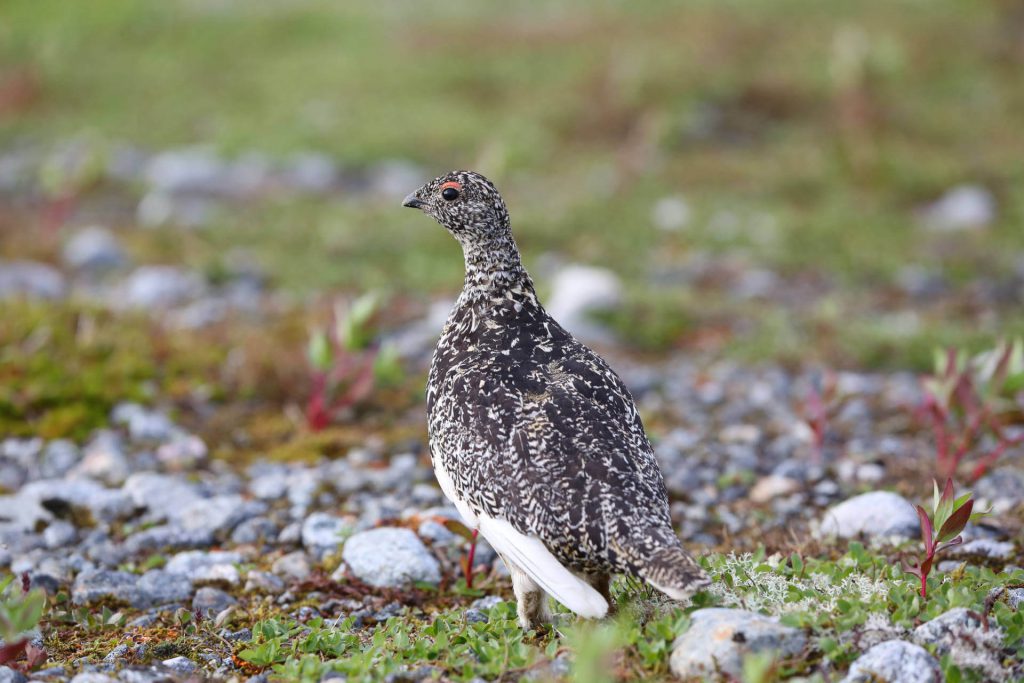
Bare Loon Lake
When we arrived at Bare Loon Lake, a lovely lake in the middle of the forest, we set up our camp and prepared our evening meal. The next morning we had an encounter of a special kind. An extraordinary bird, (later googled as Gray Jay) trusted us completely and literally ate from our hand – an unforgettable moment and of course one which needed photos as evidence for back home.

We then set off on the last stage of our journey to Lake Bennett (approx. 5-6 hours hiking time). As the ground in this last stage was still very sandy, although short, it was hard work. After a short diversion to the old graves of the former gold-diggers and to an abandoned wooden cabin we then saw our goal before us – Lake Bennett! We took the last long break, looking forward to our return to civilization and a good meal. However, at this time we were not aware that we would in fact have to exercise a little patience.
Reading tip: Trekking tips – Never been on a trekking tour? The 5 most common beginner’s mistakes and how to avoid them
Bennett
For the return to civilization there were two official possibilities: the hiking trail along the tracks of the White Pass and Yukon Railroad – but we had been recommended not to take this route – or to simply return by the said railway. Instead we were able to benefit from a private contact of Dirk Rohrbach’s and had booked a motor boat trip with Keith.

Keith Wolf (good name, of course!) is a totem pole artist of the Eagle Clan of the Tlingit First Nation and he has his studio in Carcross, situated a little further north on the lake. He regularly travels the distance between Carcross and Bennett at the southern end, but on this particular day, because of the high waves on the lake it was impossible for him to come, and so once again we set up camp and shared our last provisions. The motorboat trip the next morning gave us the last unforgettable experience of the wilderness. We could only begin to imagine the 3.000 km long canoe trip from the origin to the estuary of the Yukon River into the Bering Sea that Dirk Rohrbach had undertaken alone in 2010.
Summary
In conclusion I can only say that this was once again an excellent opportunity to test our products thoroughly under real conditions. Under such extreme conditions one also becomes aware of other essential aspects and can always find new ideas and improvements.
I would definitely recommend this trail, with no exceptions as anyone can do it! At the same time however, I would never plan for anything other than high quality materials when spending time in regions where you must absolutely rely on yourself and where the smallest error can quickly become a problem.
So, have fun and don’t forget your bear spray!
Facts of the Chilkoot Trail:
Location: Southeast Alaska – Northwest British Columbia
Airport: Skagway
Trail length: 53 km
Pass height: 1.067 m
Mountains: Boundary Ranges
Contact for more information: www.nps.gov / www.wpyr.com
More impressions of my adventure on the Chilkoot Trail:

